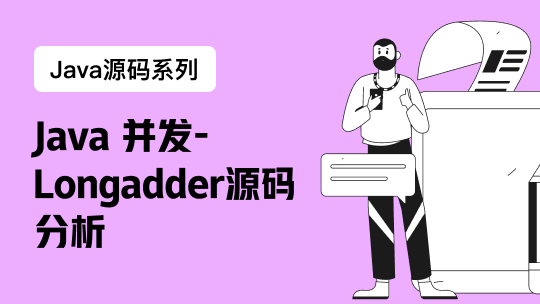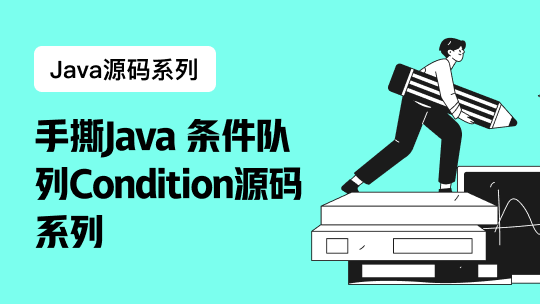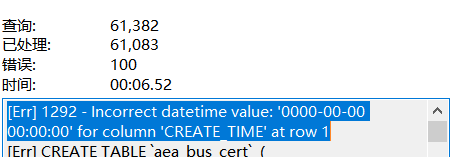一、什么是阻塞和非阻塞?
传统的 IO 流都是阻塞式的。也就是说,当一个线程调用 read() 或 write() 时,该线程被阻塞,直到有一些数据被读取或写入,该线程在此期间不 能执行其他任务。因此,在完成网络通信进行 IO 操作时,由于线程会 阻塞,所以服务器端必须为每个客户端都提供一个独立的线程进行处理, 当服务器端需要处理大量客户端时,性能急剧下降。
Java NIO 是非阻塞模式的。当线程从某通道进行读写数据时,若没有数 据可用时,该线程可以进行其他任务。线程通常将非阻塞 IO 的空闲时 间用于在其他通道上执行 IO 操作,所以单独的线程可以管理多个输入 和输出通道。因此,NIO 可以让服务器端使用一个或有限几个线程来同 时处理连接到服务器端的所有客户端。
二、NIO中阻塞和非阻塞用法
1. NIO中的阻塞式IO用法
package com.gf.nio;import org.junit.Test;import java.io.IOException;import java.net.InetSocketAddress;import java.nio.ByteBuffer;import java.nio.channels.FileChannel;import java.nio.channels.ServerSocketChannel;import java.nio.channels.SocketChannel;import java.nio.file.Paths;import java.nio.file.StandardOpenOption;/**
* 一、使用 NIO 完成网络通信的三个核心:
*
* 1. 通道(Channel):负责连接
*
* java.nio.channels.Channel 接口:
* |--SelectableChannel
* |--SocketChannel
* |--ServerSocketChannel
* |--DatagramChannel
*
* |--Pipe.SinkChannel
* |--Pipe.SourceChannel
*
* 2. 缓冲区(Buffer):负责数据的存取
*
* 3. 选择器(Selector):是 SelectableChannel 的多路复用器。用于监控 SelectableChannel 的 IO 状况
*
*/public class TestBlockingNIO {
/**
* 客户端
*/
@Test
public void client() throws IOException {
//1. 建立网络通道,连接指定服务器端口
SocketChannel sChannel = SocketChannel.open(new InetSocketAddress( "127.0.0.1" , 9898 ));
//2. 创建客户端本地文件通道
FileChannel fileChannel=FileChannel.open( Paths.get("/Users/huanchu/Documents/1.png"), StandardOpenOption.READ);
//3. 创建缓冲区
ByteBuffer buf = ByteBuffer.allocate(1024);
//4. 读取本地文件,发送到服务器
while(fileChannel.read(buf) != -1)
{
buf.flip();
sChannel.write(buf);
buf.clear();
}
//5.告诉服务端我发送完毕
sChannel.shutdownOutput();
//接受端反馈
int len=0;
while((len=sChannel.read(buf))!=-1)
{
buf.flip();
System.out.println(new String(buf.array(),0,len));
buf.clear();
}
fileChannel.close();
sChannel.close();
}
/**
* 服务端
*/
@Test
public void server() throws IOException {
ServerSocketChannel ssChannel = ServerSocketChannel.open();
FileChannel outChannel = FileChannel.open( Paths.get( "/Users/huanchu/Documents/2.png" ) , StandardOpenOption.WRITE , StandardOpenOption.CREATE );
ssChannel.bind( new InetSocketAddress( 9898 ) );
SocketChannel sChannel = ssChannel.accept();
ByteBuffer buf = ByteBuffer.allocate( 1024 );
while (sChannel.read( buf ) != -1) {
buf.flip();
outChannel.write( buf );
buf.clear();
}
//发送反馈给客户端
buf.put( "服务端接收数据成功".getBytes() );
buf.flip();
sChannel.write( buf );
sChannel.close();
outChannel.close();
}}
2. NIO中的非阻塞式IO的使用
SocketChannel
package com.gf.nio;import org.junit.Test;import java.io.IOException;import java.net.InetSocketAddress;import java.nio.ByteBuffer;import java.nio.channels.SelectionKey;import java.nio.channels.Selector;import java.nio.channels.ServerSocketChannel;import java.nio.channels.SocketChannel;import java.time.Instant;import java.util.Iterator;public class TestNonBlockingNIO {
/**
* 客户端
*/
@Test
public void client() throws IOException {
//1. 获取通道
SocketChannel sChannel = SocketChannel.open( new InetSocketAddress( "127.0.0.1" ,9898 ) );
//2. 切换成非阻塞模式
sChannel.configureBlocking( false );
//3. 分配指定大小的缓冲区
ByteBuffer buf = ByteBuffer.allocate( 1024 );
//4. 发送数据给服务端
buf.put( Instant.now().toString().getBytes() );
buf.flip();
sChannel.write( buf );
buf.clear();
//5. 关闭通道
sChannel.close();
}
/**
* 服务端
*/
@Test
public void server() throws IOException {
//1. 获取通道
ServerSocketChannel sChannel = ServerSocketChannel.open();
//2. 切换成非阻塞模式
sChannel.configureBlocking( false );
//3. 绑定连接
sChannel.bind( new InetSocketAddress( 9898 ) );
//4. 获取选择器
Selector selector = Selector.open();
//5. 将通道注册到选择器上,并且指定 "监听接收事件"
sChannel.register( selector , SelectionKey.OP_ACCEPT );
//6. 轮询式的获取选择器上已经 "准备就绪" 的事件
while (selector.select() > 0) {
//7. 获取当前选择器中所有注册的选择键(已就绪的监听事件)
Iterator<SelectionKey> it = selector.selectedKeys().iterator();
while (it.hasNext()) {
//8. 获取准备就绪的事件
SelectionKey sk = it.next();
//9. 判断具体是什么事件准备就绪
if (sk.isAcceptable()) {
//10. 若 "接受就绪",获取客户端连接
SocketChannel ssChannel = sChannel.accept();
//11. 切换为非阻塞模式
ssChannel.configureBlocking( false );
//12. 将该通道注册到选择器上
ssChannel.register( selector , SelectionKey.OP_READ);
} else if (sk.isReadable()) {
//13. 获取当前选择器上“读就绪”状态的通道
SocketChannel ssChannel = (SocketChannel) sk.channel();
//14. 读取数据
ByteBuffer buf = ByteBuffer.allocate(1024);
int len = 0;
while((len = ssChannel.read(buf)) > 0 ){
buf.flip();
System.out.println(new String(buf.array(), 0, len));
buf.clear();
}
}
//15. 取消选择键 SelectionKey
it.remove();
}
}
}}
DatagramChannel
package com.gf.nio;import java.io.IOException;import java.net.InetSocketAddress;import java.nio.ByteBuffer;import java.nio.channels.DatagramChannel;import java.nio.channels.SelectionKey;import java.nio.channels.Selector;import java.util.Date;import java.util.Iterator;import java.util.Scanner;import org.junit.Test;public class TestNonBlockingNIO2 {
@Test
public void send() throws IOException{
DatagramChannel dc = DatagramChannel.open();
dc.configureBlocking(false);
ByteBuffer buf = ByteBuffer.allocate(1024);
Scanner scan = new Scanner(System.in);
while(scan.hasNext()){
String str = scan.next();
buf.put((new Date().toString() + ":\n" + str).getBytes());
buf.flip();
dc.send(buf, new InetSocketAddress("127.0.0.1", 9898));
buf.clear();
}
dc.close();
}
@Test
public void receive() throws IOException{
DatagramChannel dc = DatagramChannel.open();
dc.configureBlocking(false);
dc.bind(new InetSocketAddress(9898));
Selector selector = Selector.open();
dc.register(selector, SelectionKey.OP_READ);
while(selector.select() > 0){
Iterator<SelectionKey> it = selector.selectedKeys().iterator();
while(it.hasNext()){
SelectionKey sk = it.next();
if(sk.isReadable()){
ByteBuffer buf = ByteBuffer.allocate(1024);
dc.receive(buf);
buf.flip();
System.out.println(new String(buf.array(), 0, buf.limit()));
buf.clear();
}
}
it.remove();
}
}}
本文分享自微信公众号 - 程序员果果(huanchuguofupk_gz)。
如有侵权,请联系 support@oschina.cn 删除。
本文参与“OSC源创计划”,欢迎正在阅读的你也加入,一起分享。









